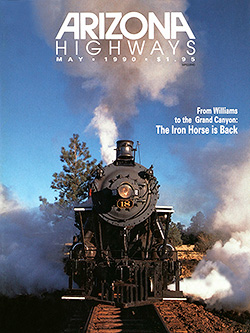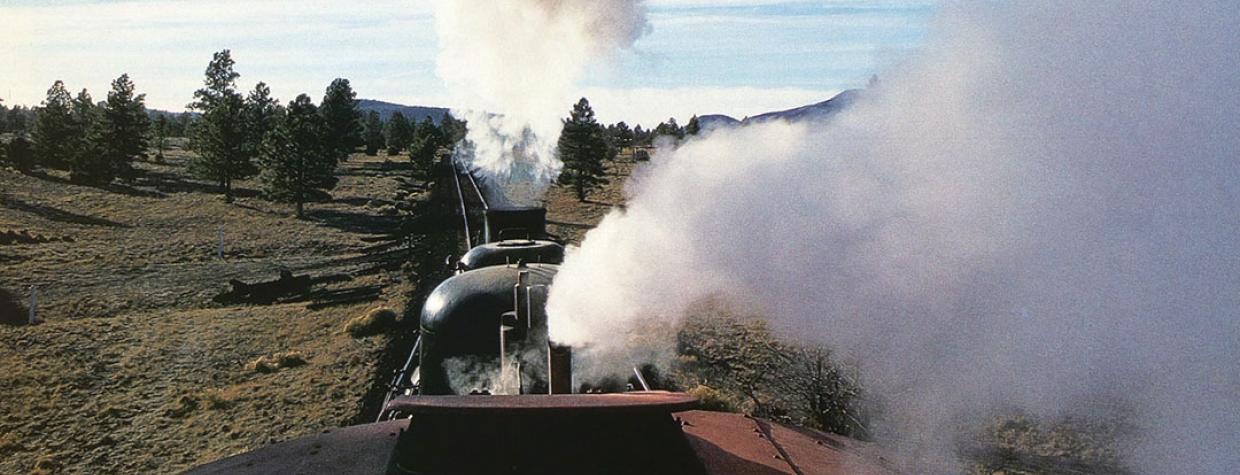Before I became an editor at the magazine, I’d shoot photo stories for Arizona Highways. I wasn’t a “scenic” shooter. Instead, I gravitated toward those stories that involved people and lifestyles. One of the things I enjoyed most was the discovery process. No matter what the story was or how much planning I’d do before a shoot, I could always count on bumping into something I hadn’t anticipated. More often than not, those surprises were good — and usually added to the visual content of the piece.
That’s what happened on my final visit to Williams, Arizona, as I was finishing up a story about the return of the Grand Canyon Railway. It was 1989, and I was traveling with Gary Bennett, the magazine’s art director at the time. He and then-Editor Merrill Windsor thought a photo of a newly resurrected steam engine might make for a compelling cover. I’d been documenting the railway for a little more than a year and had been given great access to everything being done. When I called the railway’s manager, hoping to make a “glamour shot” of the steam engine, there was no hesitation. We scheduled the shoot for early December.
The timing was very close to the deadline for our May 1990 issue, but we wanted to work on a cold, crisp morning, hoping the engine would produce a lot of white vapor. The morning of the shoot, Gary and I grabbed some coffee, pre-dawn, and made the short drive to the rail station, where the thermometer read 16 degrees. We climbed into the train engine and headed about a mile outside of town. As I extended the legs of my tripod, Gary commented on how perfect a morning it was — not a cloud in the Northern Arizona sky.

This was back in the “film days,” and standing on the tracks, I made photos using two cameras and two formats: 35 mm and “two and a quarter.” I also used two different films: Kodachrome 64 and Fuji’s new ISO 50. Both films were excellent, but they produced slightly different results. The 64 was more open in the shadows, while the Fuji saturated color a bit more. Looking through the viewfinder at this ancient piece of history, I started thinking about Western movies — the oldies where lawmen chase robbers across the tops of rail cars — and it made me think there might be another nice photo possibility here.
We hopped back into the engine, and I jokingly asked the engineer if there was any chance he’d let me drive. His answer was an emphatic “No,” which cued my follow-up question: “Would you let me climb on top of the train and shoot while you steam back into town?” “Sure, no problem,” he said. So, I grabbed a camera, loaded it with a fresh roll of Kodachrome and a 20 mm lens, and climbed to the top of the tender car.
As the train slowly moved forward, I started to shoot. I made a few frames and realized that physics trumps photography. The steam from the smokestack was blowing back at me and condensing, and I was getting soaked. So, I did what you’re never supposed to do to a camera lens: I wiped it clean with my shirt and kept on shooting. I wasn’t going to blow a rare opportunity because of a little extra moisture. Fortunately, the shot turned out to be what I was hoping for. And proof that it never hurts to ask permission to do something a little crazy.
Do you have a question about photography? Email it to [email protected], and our photo editor, Jeff Kida, will try to answer it in a future issue.

